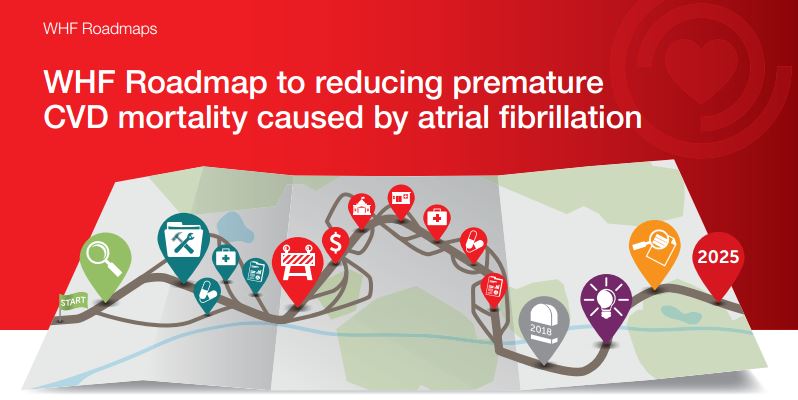 With the aim to help prevent atrial fibrillation (AF) and to improve its management worldwide— particularly in low- and middle-income countries—the World Heart Federation (WHF) has launched a new Roadmap to tackle non-valvular AF.
With the aim to help prevent atrial fibrillation (AF) and to improve its management worldwide— particularly in low- and middle-income countries—the World Heart Federation (WHF) has launched a new Roadmap to tackle non-valvular AF.
The Roadmap or global implementation strategy named “WHF Roadmap to reducing premature cardiovascular disease mortality caused by atrial fibrillation” comes as new figures show the number of people with AF continues to rise.
According to WHF, between 1990 and 2013 the overall number of diagnosed cases globally increased from below 7m to just over 11m. The findings are likely to underestimate the true scale of AF because of the large number of people who do not know they have the condition. The morbidity burden associated with AF, as measured by disability-adjusted life years, also continues to grow.
David Wood, president elect of WHF, says: “A substantial proportion of non-valvular AF goes undetected because there are no symptoms. Undetected AF increases the risk and severity of stroke and heart failure and is linked to high costs incurred by individuals, healthcare systems and economies across the world.
“Our Roadmap identifies areas where improvements can be made that will lead to better management of AF on a global scale, especially in low- and middle-income countries where research suggests patients tend to be younger and more likely to experience heart failure.”
The Roadmap highlights three aspects in the global care gap of atrial fibrillation management:
- Pulse is not routinely palpated in over 65 year olds.
- Many patients with AF are not receiving anticoagulant therapy. Data from the Garfield registry from 19 countries estimates that 38% of AF patients with high stroke risk are not on anticoagulant therapy.
- The extent of care gap varies between countries and more country-specific AF data are needed, in particular from low- and middle-income countries.
There is strong evidence that early detection and treatment of AF can reduce morbidity and mortality. The Roadmap identified potential roadblocks on the management of patients for atrial fibrillation and proposed potential solutions for overcoming the existing barriers:
| Roadblocks | Potential solutions |
| Long distances to clinics result in low numbers of rural patients presenting to clinics for screening | Train community health workers or pharmacists to screen for possible AF with pulse-checking in non-clinic settings. |
| Implement novel telemedicine technologies (eg. transmission of ECG results from rural areas to urban facilities). | |
| Educate at risk populations (eg. those 65+ years of age) to self-screen with pulse checks. | |
| Shortage of healthcare professionals with training in AF, including interpretation of ECG, initiation of and monitoring of anticoagulation therapy | Improve post-graduate training and continuous medical education. |
| Conduct awareness campaigns through healthcare professional networks. | |
| Develop simple and locally applicable AF guidelines. | |
| Implement non-physician health worker managed anticoagulation programme. | |
| Reluctance of physicians and patients to initiate oral anticoagulation therapy | Conduct country-specific training on oral anticoagulation therapy management and support programmes for non-cardiologist healthcare professionals. |
| Oral anticoagulants potentially unaffordable for patient households, resulting in non-adherence to treatment regime | Provide universal healthcare coverage for essential medicines. |
| Implement internationally recognised policies for the reduction of essential medicine costs. | |
| Lack of awareness of importance of persistence adherence to oral anticoagulant therapy | Conduct research into feasibility of self-monitoring programmes for patients on oral anticoagulation in low- and middle-income countries. |
| Develop and implement country-specific patient education, medical literacy and support programmes for diagnosed AF patients on oral anticoagulation therapy. |
The AF Roadmap is part of a wider WHF Roadmap initiative supporting the World Health Organization’s (WHO) Global Action Plan Targets, which aim to reduce premature deaths from non-communicable diseases including cardiovascular disease by 25% by 2025.
The WHF Roadmaps are designed to translate existing knowledge of best practice, barriers and solutions into practical strategies for improved cardiovascular health. The Roadmaps provide guidance on interventions that can be adapted according to country or region. Previous Roadmaps have focused on secondary prevention, tobacco control and hypertension. Click here for more information about WHF Roadmaps.









